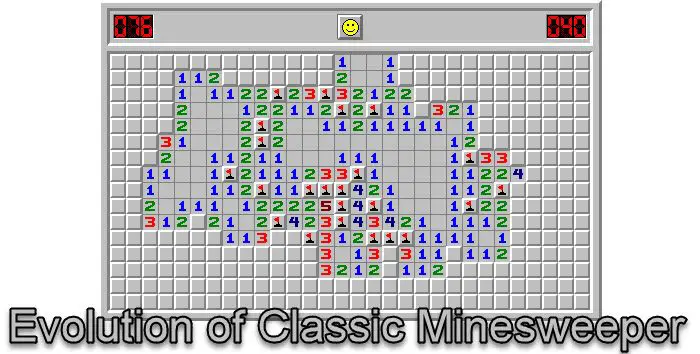A game that made its first appearance in the era of Windows 3.1 from Microsoft Minesweeper was released onto the gaming pedestal and quickly became a legendary flag in the gaming world. Beyond just being fun to play, Minesweeper was an intuitive introduction to the modern graphical user interface for millions.

Evolution of Classic Minesweeper and Its Impact on Users
Introduction Charting the Path of a Digital Pioneer
This investigation follows how a minor desktop pastime transformed into a cherished old fashioned in the period of portables and how the game established significant changes in UI, gaming culture, and the brain’s cognitive skill set.
The Origins and First Consequences: A Technological Treadmill
Introduced as part of Windows 3.1, the role of Classic Minesweeper went well beyond mere diversion; it also served its original strategic purpose of familiarizing new consumers with mouse operations. It appeared to be a simple computer game to a casual observer, teaching basic computer skills—left-click to uncover tiles, right-click to place flags, click-and-drag—through a series of engaging logic-based puzzles. In this section, we will look at anecdotal evidence from some of the first generation of Minesweeper users, who will shed some light on how Minesweeper opened up the strange and frightening new realm of personal computing every day and remain impartially interesting.
Capability Through Windows Versions: Innovation On Windows
Minesweeper underwent minor performance and visual enhancements in every Windows operating system update. Minesweeper took on various forms, from the pixelated Windows 95 days to more sleek versions during the Windows XP, and Windows 7 era, as it coped with changing tech demands. It allowed users to move through multiple opcodes of user interface designs. So, we compare game design and functionality changes with a few well-known software development trends for each decade.
Mobile And Browser-Based Gaming: Minesweeper Beyond The Limits
Converting Minesweeper from desktops into mobiles was a significant transition that could be huge in introducing the game to the next generation. This was not an evolution of the platform but a complete re-imagining of interaction via touchscreen technology. This is where we will have excellent case studies of well-known Minesweeper apps. This includes going over how mobile platform adaptations have shaped gameplay and why UI changes that streamline play and improve accessibility matter in the first place.
Cognitive and Academic Factors: Minesweeper as a Brain Workout
While fun to play even at the most basic level, Minesweeper stands out as appealing to strengthening mental skills in logical reasoning, pattern recognition, and quick decision-making. We look at some educational theories and cognitive studies that underline the benefits of the game and reveal how Minesweeper effectively found a place in the study work, such as teaching computer science and related subjects in this field of computer science and cognitive psychology in a more general direction.
Social Impact And Promising Future Trends
Minesweeper’s mark on popular culture is staggering, affecting competitive gaming scenes and solidifying itself as a pillar of digital nostalgia. For our last stretch, we step back and look at where Minesweeper fits into the tapestry of pop culture and where it could go in the future, now that we live in a world so ripe with technological advancements like AR and AI. Weaving predictions with expert opinions, we ponder how Minesweeper would expand and keep millions engaged with novel gameplay.
Conclusion: Why Simplicity Is Timeless in Strategy
However, the long journey from needing a game in Windows 3.1 to a classic on the same platform highlights the endearing nature of simplicity in a complex digital landscape. In a world where gaming technology changes daily, the values Minesweeper promotes—strategic thinking, player-focused design, and cognitive development—continue to ring true. The standout design of this timeless classic has had an unquestionable influence on current digital gaming, increasing its relevance and utility in a broader educational context.
Leave a Reply